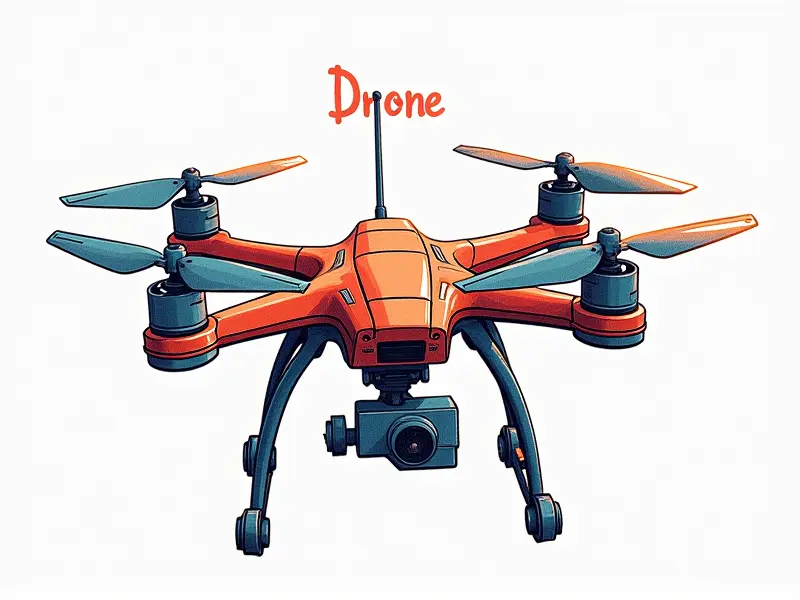What is transmitter power?

Understanding Transmitter Power Requirements
Transmitter power is a critical factor in the performance of remote control (RC) devices, including drones, aircraft, cars, and boats. It directly influences the range and stability of the signal between the transmitter and receiver. Adequate transmitter power ensures optimal communication without interference or loss of connection.
Optimal Power Settings for RC Transmitters
Selecting the right power setting is crucial to achieving a balance between range, battery life, and reliability. Different environments require different power levels; urban areas with high electromagnetic noise may need higher power settings compared to open fields or rural locations.
Factors Affecting Optimal Power Settings
- Environment: Urban vs. Rural
- Battery Type and Capacity: Lithium-Polymer (LiPo) batteries offer better performance than NiMH.
- Frequency Band: 2.4GHz vs. 72MHz bands have different propagation characteristics.
Boosting Range with Better Transmitter Power
Increasing the power of your RC transmitter can significantly enhance its range, allowing for more extensive control over your device. However, this must be balanced against potential interference and regulatory limits on power output.
Tips to Increase Transmission Distance
- Upgrade Antennas: Use high-gain antennas for better signal strength.
- Select Appropriate Frequency Band: Optimize the frequency band based on your environment and device requirements.
- Use Quality Components: Ensure all components are of high quality to minimize signal loss.
Enhancing Control Distance with Transmitter Power
The distance at which you can control an RC device is directly related to the power output of your transmitter. Higher power settings generally mean greater control distances, but this must be balanced against safety and regulatory concerns.
Safety Considerations
- Regulatory Compliance: Follow local regulations regarding maximum transmitter power.
- Battery Management: Monitor battery levels to avoid sudden signal loss due to low power.
What is Maximum Transmitter Power?
The maximum transmitter power refers to the highest output level allowed by regulatory bodies and technology constraints. Exceeding this limit can result in legal issues or performance degradation, including increased interference with other devices.
Regulatory Limits
- FCC Regulations: In the United States, the Federal Communications Commission (FCC) sets strict limits on transmitter power.
- EU Standards: European Union regulations also impose specific restrictions.
The Impact of Transmitter Power on Flight Performance
Adequate transmitter power ensures smooth and reliable flight performance for RC aircraft. Insufficient power can lead to intermittent signal loss, causing the drone or plane to lose control mid-flight.
Performance Metrics Affected by Power Output
- Signal Stability: Stronger signals reduce the likelihood of dropouts and lag.
- Control Responsiveness: Higher power levels enhance real-time control over the device.
Choosing the Right Power for Your RC Transmitter
Selecting the appropriate power setting involves considering your specific needs, such as range requirements and environmental conditions. It is essential to strike a balance between maximum performance and adherence to legal constraints.
Steps to Determine Optimal Power Settings
- Assess Your Needs: Identify the distance and signal quality required for your application.
- Test Different Configurations: Experiment with various power settings in different environments.
- Consult Manufacturer Guidelines: Follow recommendations provided by RC device manufacturers.
Maximizing Signal Strength in RC Transmitters
To maximize signal strength, focus on improving the quality of components and optimizing antenna configurations. High-quality antennas and efficient power management systems can significantly enhance performance.
Techniques for Enhancing Signal Quality
- Antenna Selection: Choose high-gain directional or omnidirectional antennas based on your needs.
- Battery Management: Use efficient power management systems to maintain consistent signal strength throughout the flight.
- Environmental Adaptation: Adjust settings according to environmental conditions for optimal performance.
Common Issues with Low TX Power
Low transmitter power can lead to several issues, including reduced range, increased susceptibility to interference, and potential loss of control over the RC device. These problems can be mitigated by upgrading your equipment or optimizing existing components.
Problems Caused by Insufficient Power Output
- Signal Interference: Higher noise levels in crowded frequency bands.
- Range Limitations: Inability to control the device at longer distances.
- Battery Drain: Rapid depletion of battery power due to inefficient signal transmission.
Understanding RC Transmitter Range
The range of an RC transmitter is determined by a combination of factors, including power output, antenna quality, and environmental conditions. Understanding these variables helps in optimizing the performance of your RC device.
Variables Affecting Range
- Transmitter Power: Directly impacts the distance over which signals can be transmitted reliably.
- Antenna Type and Quality: High-quality antennas provide better signal strength and range.
- Environmental Factors: Obstacles, terrain, and electromagnetic interference affect range.
Tips for Improving RC Transmitter Range and Power
Several strategies can be employed to improve the range and power of your RC transmitter. These include upgrading components, optimizing settings, and maintaining equipment properly.
Strategies for Enhancing Performance
- Component Upgrades: Replace standard antennas with high-gain models.
- Setting Adjustments: Fine-tune power output based on specific use cases and environments.
- Maintenance: Regularly check and clean components to ensure optimal performance.
Conclusion
In conclusion, understanding transmitter power requirements is crucial for achieving reliable and efficient control of RC devices. By selecting the right power settings, optimizing antenna configurations, and maintaining equipment properly, you can enhance both range and signal quality. Always adhere to regulatory guidelines and test your setup in various environments to ensure optimal performance.

